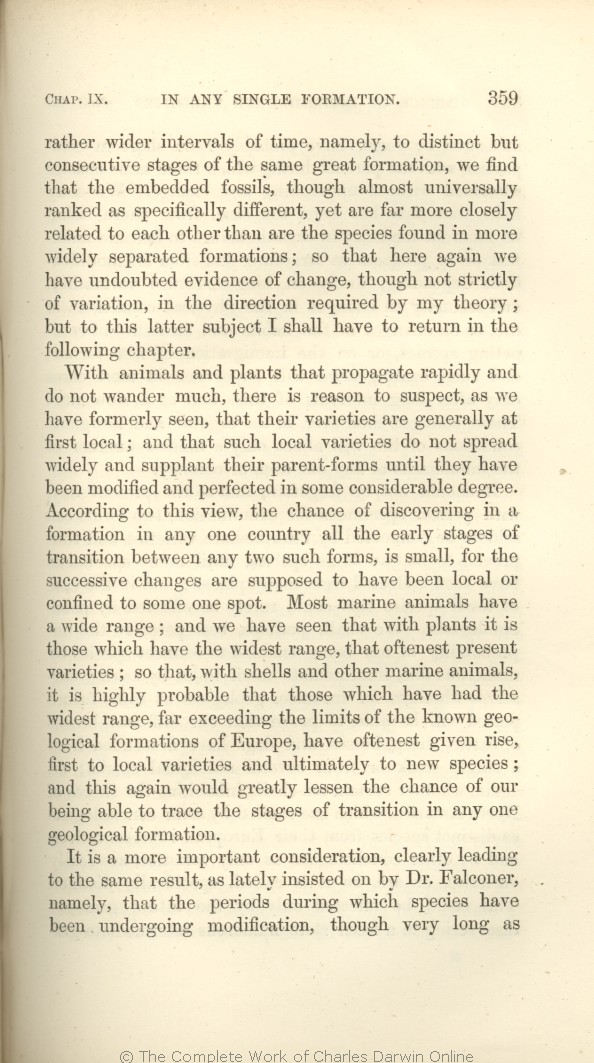to rather wider
intervals | intervals 1861 1866 1869 1872 | | intervals, 1859 1860 |
| of time, namely, 1861 1866 1869 1872 |
| namely, 1859 1860 |
| almost 1859 1860 1861 1866 1869 | almost 1872 |
| related 1861 1866 1869 1872 | | allied 1859 1860 |
| so that here again we have undoubted evidence of change, though not strictly of variation, 1861 1866 |
| but to this subject I shall have to return 1859 1860 |
| so that here again we have undoubted evidence of change 1869 1872 |
| direction required by my theory; but to this latter subject I shall have to return in the following 1861 1866 |
| following 1859 1860 |
| direction required by the theory; but to this latter subject I shall have to return in the following 1869 |
| direction required by the theory; but to this latter subject I shall return in the following 1872 |
|
|
...| OMIT 1866 1869 1872 |
| One other consideration is worth notice: 1859 1860 1861 |
| With 1866 1869 1872 | | with 1859 1860 1861 |
| ..... 1866 1869 1872 | | can 1859 1860 1861 |
| do 1866 1869 1872 | | are 1859 1860 1861 |
| wander much, 1866 1869 1872 | | highly locomotive, 1859 1860 1861 |
| such forms, 1866 1869 | | forms, 1859 1860 1861 1872 |
| that, 1866 1869 1872 | | that 1859 1860 1861 |
| highly probable that 1861 1866 |
| probably 1859 1860 |
| probable 1869 1872 |
| those which have 1859 1860 1861 1866 |
| that those which have 1869 |
| that those which 1872 |
| ..... 1861 1866 1869 1872 | | which 1859 1860 |
| one 1859 1860 1866 1869 1872 | | ony 1861 |
|
|
It is a more important consideration,
clearly | clearly 1866 | clearly 1869 1872 |
| periods 1866 | | period 1869 1872 |
| species have been undergoing 1866 |
| each species underwent 1869 1872 |
|









